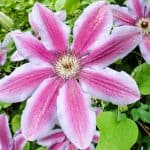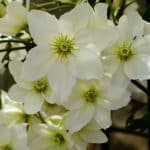Last updated on March 7th, 2024
Our site is reader supported, this means we may earn a small commission from Amazon and other affiliates when you buy through links on our site.
If you are looking to have different shades of beautiful flowers and lush green foliage all year round, then you need an evergreen climber. Some of the best evergreen climbers will make sure that your garden is thriving all year long.
The best evergreen climbing plants include many varieties, they produce a rainbow of shades littered throughout not just the spring and summer but autumn and winter too because their leaves often change to vibrant red and orange colours in autumn following a spectacular show of flowers in summer. The clematis ‘Jingle Bells’ even produces flowers in winter!
If your looking for evergreen climbers for a fence which are more compact then take a look at my best evergreen climbers for fences guide here
1. Passiflora caerulea – Passion Flower
Passionflowers produce some of the most visually stunning flowers you will ever see. Even though they are the quintessential tropical flower, they can legitimately be grown anywhere, especially the common passiflora caerulea variety, which you can see flowering in the picture below. There are so many varieties, although most people know about the white and purple mixture, other varieties produce stunning burgundy flowers, blue flowers, pink and white mixtures, and much more.
The three hardy varieties we would recommend are Passiflora caerulea, Passiflora caerulea ‘Constance Eliott’ which is all white, and Passiflora ‘Amethyst’ which is purple.
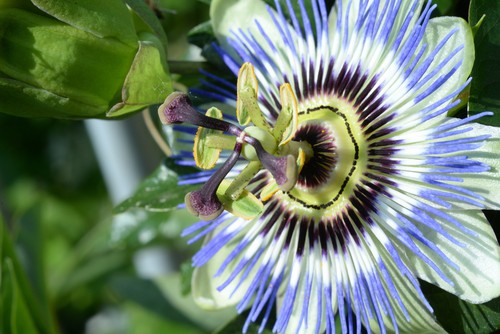
Passionflowers are versatile climbers that you can grow in your garden and allow them the opportunity to climb up a wall or pergola, even a trellis. You can also grow them in containers so that they can climb up specific structures in your garden and give you flowers throughout the growing season.
With Passionflowers, you don’t need to deadhead or prune realistically at all. They will continue to vine and wrap around whatever structure you provide for them and the flowers will come and go at their leisure. You will enjoy a variety of stunning base petals offset by the circular collection of richly coloured petals and stamens in the middle. After flowering, they produce bright orange fruits.
2. Clematis armandii
This variety of clematis is a sweetly scented climber that is well-known for the diverse foliage it offers and the single form of flowers that take on the shape of stars. The clematis armandii is an evergreen climber and one that provides blooms that are uncharacteristic for the plant itself, large with leathery leaves.
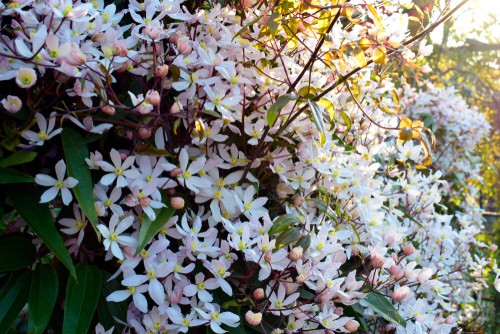
The young leaves start out as a bronze colour, after which, they take on a dark green shade as they mature. They offer a backdrop all year round and will prolifically bloom with very intensely scented saucer-like flowers that start in March and go all the way through until June. This is a white flowering species that offers flowers spanning between 6cm and 9cm. They give a beautiful pure white display against the dark foliage with a scent that combines almonds and honey.
If you allow it to grow up a fence or the side of your house, you don’t need to worry about it destroying the structure, unlike other climbers such as ivy. The picture above is of a variety of clematis armandii called ‘Apple Blossom’ which has a pink tint to the flowers.
3. Trachelospermum jasminoides – Star Jasmine
The ‘Star Jasmine’ gets its name from the star-shaped flowers it produces. This particular plant is very well known for producing a lush, dark green backdrop offset by the tiny white flowers you will see.
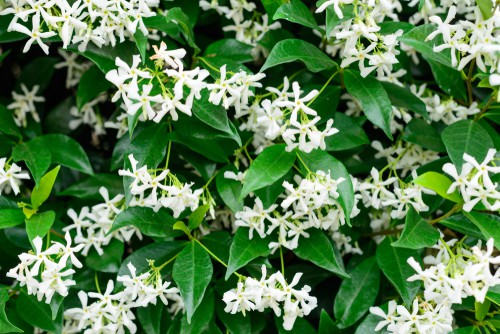
These white flowers are richly scented and perfectly suited for growing up structures. This beautiful flower is best grown against a wall, a trellis or being allowed to trail around your property in the form of a groundcover. It makes for a wonderful summer-blooming plant, especially in containers if you live in a colder area because they can be a little tender, so a sheltered site is advised. It is best to plant it someplace where the wind won’t brush the rich sent away from you.
4. Climbing Hydrangea ‘Seemannii’
Almost all climbing Hydrangeas have one thing in common, they are all a bit slow to really get moving once they’re planted. Most of the time it can take a few years for its collection of flowers to amass, however, with this variety you can enjoy rich foliage and as it starts to grow, beautiful white frothy flowers. The flowers can be removed as soon as they appear so that the growth is expedited.
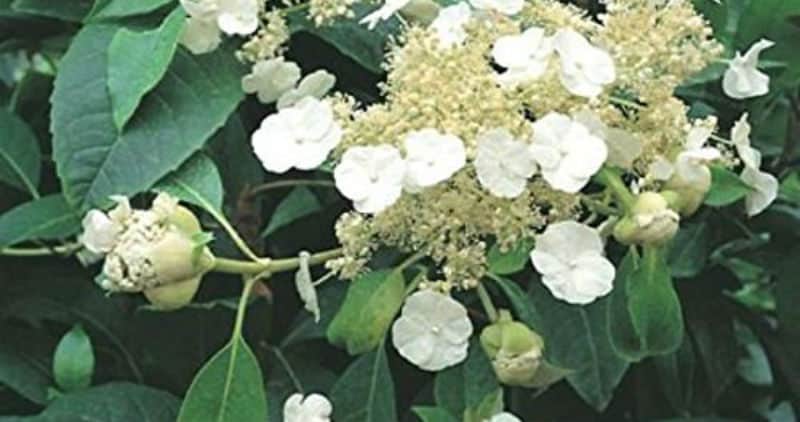
This variety should not be confused with the deciduous climbing Hydrangea that does lose all its leaves in winter.
5. Hedera Helix – English Ivy
English Ivy is a vigorous evergreen vine that can be used to provide ornamental groundcover or establish itself as a covering for brick and stone walls. If you are planting outside you need to make sure that this particular variety is acceptable in your area, simply because it is so invasive that in certain regions you might need to undergo considerations that will keep it confined to your property.
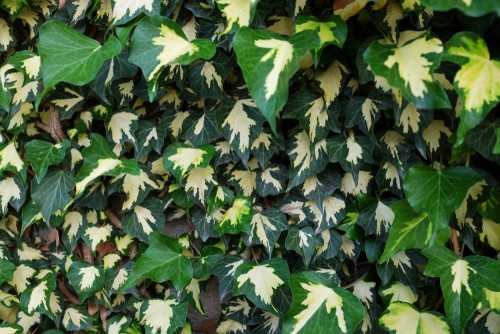
As an ornamental climbing cover for any exterior you have, you want to plant this in a place where other groundcovers may not grow as readily. It requires moist, well-drained soil and can spread upwards or outwards depending on whether it is used up the side of a building or as a groundcover. It does best with mild shade or indirect sunlight and requires very little feeding. You can cut it back every three years to rejuvenate the plant. Ivy doesn’t need any support because it can climb against brick walls with no support, although it will need a little support to get it started until it has attached itself to the wall.
6. Clematis ‘Jingle Bells’ (Winter Flowering)
This clematis, otherwise known as Jingle Bells, has very attractive flowers that take on a bell-like shape followed by fluffy seed heads thereafter. It is an evergreen climber that produces flowers from the late autumn through to the early spring. These take on a pale yellow or creamy white shade.
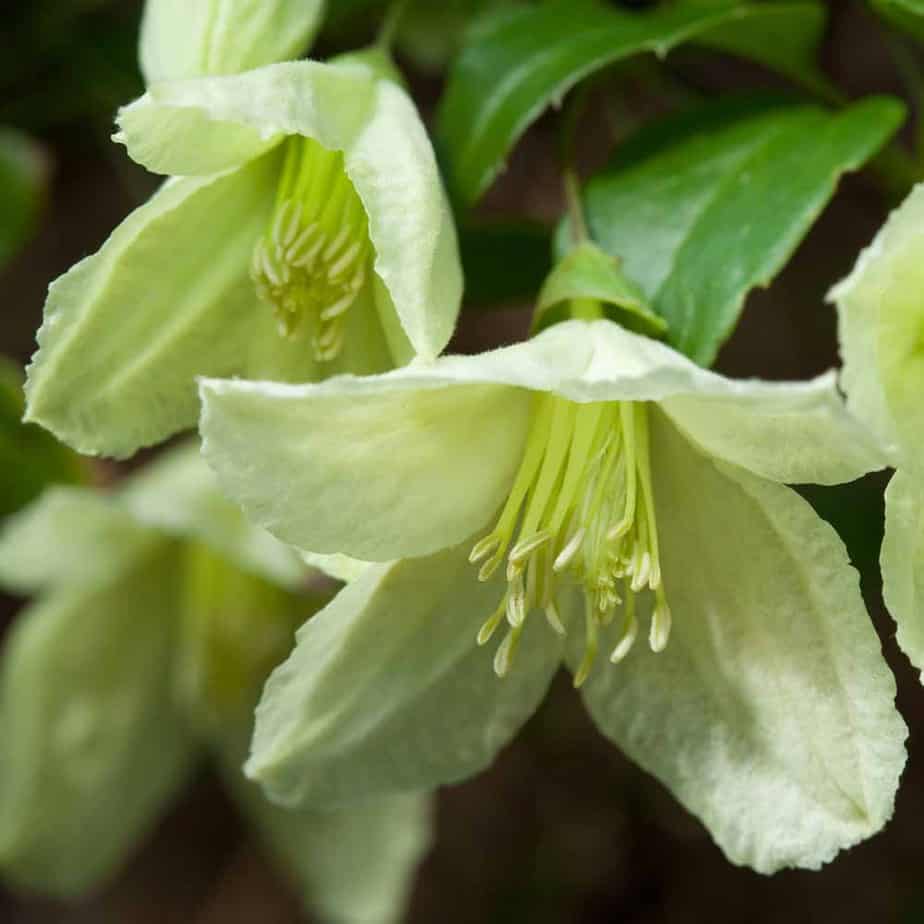
The flowers are produced in the winter and the early spring which means that when grown in your garden you can combine the clematis Jingle Bells with other clematis or other climbing evergreens from this list to make sure that you can enjoy a floral display at different times of the year.
This particular plant requires fertile, well-drained soil in a warm and sheltered location. The base should be kept cool and shaded and you don’t have to do much in terms of pruning. Thankfully this particular plant is generally disease-free.

